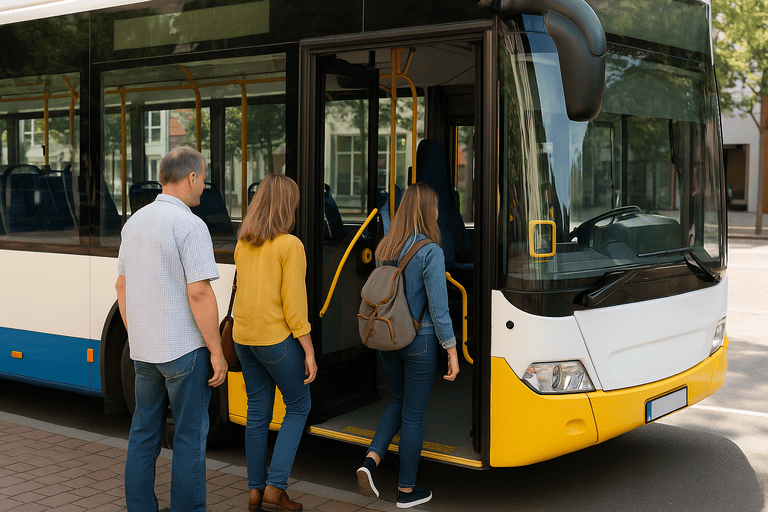Public transport is more than just a way to get from one place to another—it’s an important part of daily life that supports work, education, and recreation. In Bundaberg, the bus network plays a central role in connecting people across the city and surrounding suburbs. For both residents and visitors, knowing how to use the Bundaberg bus timetable effectively can make commuting smoother, reduce stress, and create more opportunities to explore everything the region has to offer.
For locals and visitors alike, the Bundaberg bus timetable by Stewart and Sons provides an essential guide to navigating the city efficiently. Whether it’s catching a bus to work, getting to school on time, or making weekend plans, the timetable serves as a practical tool for everyday living.
Public Transport in Bundaberg: An Overview
Bundaberg has a strong reputation as a regional hub, with its economy, schools, and tourism drawing people from across the Wide Bay area. The bus system is a backbone of this connectivity, linking suburbs, the CBD, and key regional destinations. A well-structured timetable ensures residents can depend on buses to run on time, giving them confidence in planning their days.
Buses reduce the reliance on cars, helping to ease traffic congestion and minimize environmental impacts. Reliable services also support those who may not drive, including young people, seniors, and visitors to the city. Having a reliable timetable encourages greater use of public transport, creating positive flow-on effects for community wellbeing.
For more context on how cities adapt to modern transport needs, readers may be interested in urban living articles on Smart Article.
Workday Commuting Made Easier
One of the most significant benefits of the Bundaberg bus timetable is its impact on the working population. For employees, the timetable offers predictability and peace of mind. By knowing exactly when buses arrive and depart, workers can plan their morning routine more efficiently, often avoiding the stress of being late or missing crucial connections.
Employers also benefit indirectly, as punctual transport contributes to productivity and reliability among staff. In areas where parking is limited, such as near hospitals, schools, or the CBD, buses provide a practical alternative.
The financial savings also matter. Regular commuters may save considerably on petrol, parking, and vehicle maintenance by relying on public transport. For those working multiple shifts or non-traditional hours, knowing the timetable can be the difference between an easy commute and a frustrating journey.
For more strategies on managing your day effectively, Smart Article offers time management insights.
Supporting Students and Education Access
Students are among the largest groups to benefit from a dependable timetable. With many schools, TAFE campuses, and universities located around Bundaberg, the bus system provides young people with safe and cost-effective transport options.
Parents often appreciate the timetable’s reliability as it ensures their children can reach school on time without the need for additional car trips. University and TAFE students, many of whom juggle classes with part-time work, find the bus schedule particularly valuable in maintaining their busy timetables.
Public transport also gives students greater independence, supporting their social and educational growth. Whether it’s meeting friends, attending after-school activities, or accessing libraries and learning centres, the timetable underpins mobility and opportunity.
Leisure, Tourism, and Weekend Travel
Bundaberg isn’t just a working and learning city; it’s also home to popular leisure and tourism destinations. From Mon Repos beach to the Bundaberg Rum Distillery, buses help both locals and tourists reach these attractions without needing a car.
The Bundaberg bus timetable is particularly useful for weekend planning. Families can schedule outings around bus services, while tourists may find it easier to explore local highlights affordably. The timetable also plays a role in promoting eco-friendly tourism, as group travel by bus reduces emissions compared to individual car trips.
Community events, local markets, and sporting fixtures also become more accessible when residents can depend on a structured schedule. This accessibility helps strengthen the social fabric of Bundaberg, allowing people to connect with their city and each other.
Practical Tips for Using the Bundaberg Bus Timetable
Using a bus timetable may seem straightforward, but there are simple tips that can make the experience even smoother. Start by familiarizing yourself with your nearest bus stop and the routes that service it. Understanding peak and off-peak hours is also valuable, as travel times may vary depending on demand.
Planning ahead ensures fewer surprises, especially when travelling across multiple routes. Always account for a few extra minutes before your bus is due to arrive—being early helps prevent unnecessary delays.
Online resources and real-time updates are increasingly available, giving passengers up-to-date information about delays or route changes. This is particularly handy for those commuting during peak hours.
With the Bundaberg bus timetable by Stewart and Sons, locals can plan trips around both work and leisure commitments, reducing the stress of uncertainty and improving daily routines.
The Broader Impact of a Reliable Timetable on Community
A consistent bus timetable does more than just help individuals—it strengthens the community as a whole. Reliable transport encourages inclusivity by providing equal access to opportunities regardless of age, income, or mobility.
It also contributes to sustainability. By making buses a convenient option, fewer people need to rely on private cars, which reduces congestion and lowers emissions. This, in turn, contributes to a cleaner and more liveable Bundaberg.
Public transport timetables also help communities prepare for growth. As Bundaberg continues to expand, reliable bus scheduling will remain an important factor in ensuring the city develops in a sustainable and connected way.
Conclusion
The Bundaberg bus timetable is more than a list of departure times—it’s a roadmap that connects people with opportunities across work, study, and leisure. By understanding and using the timetable effectively, locals and visitors may find commuting simpler, education more accessible, and leisure activities more enjoyable.
As Bundaberg grows and evolves, the role of public transport will only become more significant. Having a dependable timetable at hand empowers individuals while also strengthening the wider community. For anyone planning their next trip, checking the timetable is a smart step towards a smoother journey.



